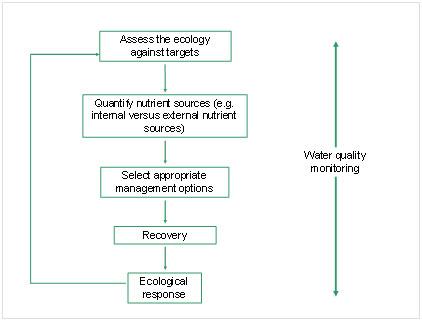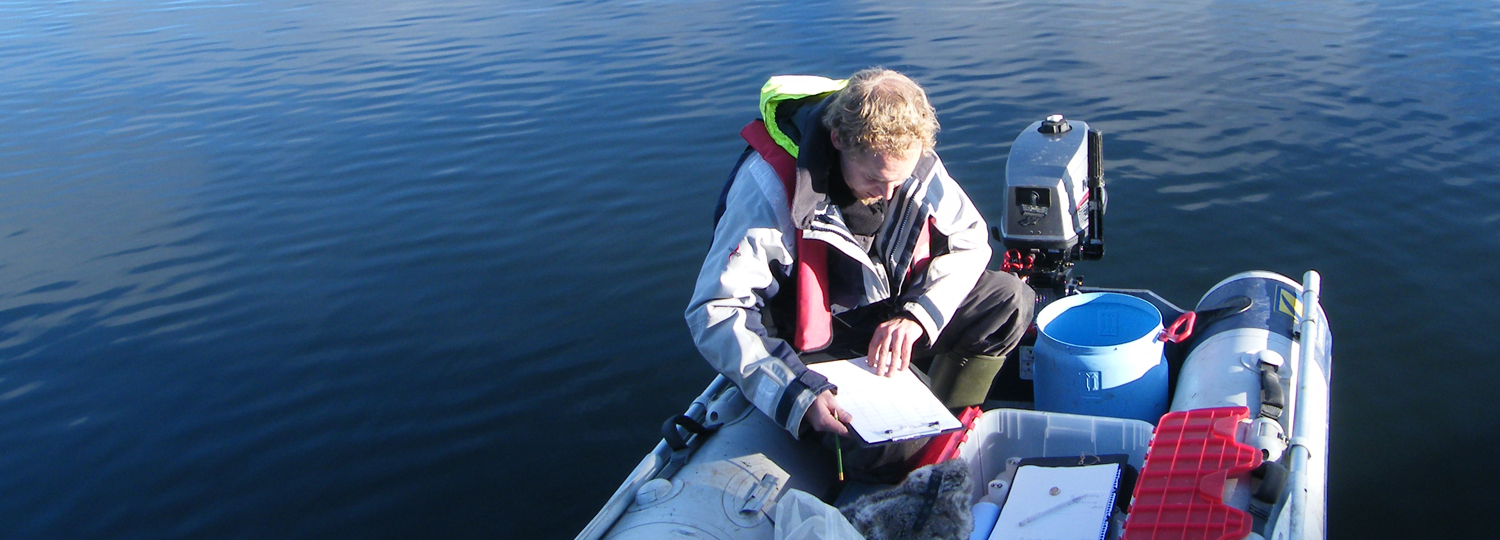Our knowledge of how lake ecosystems respond to environmental change is routinely used to assess international, national, regional and site-specific lake management requirements. This knowledge has been incorporated into a range of decision support tools that can help lake managers diagnose water quality problems effectively and develop suitable restoration strategies.
- Reducing internal P loading to speed up recovery
- Assessing the effectiveness of proposed management scenarios
- Controlling non-native, invasive aquatic plant species
- Return to UK Lake Restoration project
Reducing internal P loading to speed up recovery
When phosphorus (P) inputs from the catchment are reduced, lake recovery can take several decades. This delay is caused by the internal release of P from the lake sediments (“internal loading”). This P has accumulated in the lake sediments during periods of high inputs from the catchment. Controlling this internal P loading effectively once catchment inputs have been controlled can greatly accelerate the ecological recovery process.

Figure: Conceptual model for the steps involved in lake restoration
We developed the UK Lake Decision Support System (KLEERS) to assess the need for in-lake P management measures to be applied to enhance the recovery process and ensure that water quality targets are met in a timely manner. This tool is based on a set of functional indices (eg strength of nutrient limitation, ratio of internal to external loading, etc) that are derived from literature, expert knowledge and a range of case studies documenting how lakes have responded to specific management measures. It builds on a range of existing qualitative assessment tools and incorporates the results from several whole lake process manipulation studies.
KLEERS is very flexible and can be used both qualitatively and quantitatively, depending on the data availability. It has recently been used to screen large, national water quality datasets to identify lakes that are likely to respond positively to a reduction in internal P loading. For more information on the KLEERS tool contact Dr Bryan Spears.
Assessing the effectiveness of proposed management scenarios
We use the knowledge gained from our long-term monitoring sites to develop lake management models with which the ecological effects of future pressures and mitigation measures can be quantified.
The lake model PROTECH simulates the dynamic responses of up to 10 species of phytoplankton (from a library of more than 100) to environmental variability in lakes and reservoirs. Initially, the PROTECH models were developed to play a commercial, decision-support role in the management of troublesome algal blooms in industrial water sources. However, progressive refinements to the model have incorporated robust ecological theory, making PROTECH a useful tool for research into plankton community ecology and lake restoration processes.
More recently, the PROTECH model has been used to predict the impacts of climate change on lakes and to examine the combined influence of eutrophication and changes in flushing rate on lake water quality. It has also been used to examine the effects of variations in light availability and mixing on algal abundance. The main focus of many of these studies has been to examine the impacts of management intervention on the functional ecology of the phytoplankton community, especially the cyanobacteria (blue-green algae) that can affect water quality so adversely.
Controlling non-native, invasive aquatic plant species
Aquatic plants are essential components of a healthy lake ecosystem and support many of the ecosystem services that we rely on. However, the ingress of non-native, invasive aquatic plant species is one of the most high-profile and potentially destructive pressures facing our lake ecosystems today.
Our research is improving our understanding of the mechanisms that enable non-native aquatic plants to spread so successfully, and of the economic and environmental impacts of such invasions. Our results are used to provide evidence-based advice and information to regulatory authorities on the ecology and control of nuisance aquatic plant species and we have published a range of aquatic plant datasheets that are designed to support this activity.
This guidance is used to develop policy and mitigation measures that aim to safeguard our indigenous biodiversity from the unwelcome impacts of competition from non-native, invasive species. Our work has also helped to inform the GB Non-Native Species Secretariat on the management of invasive species.
At the European level, we have also been instrumental in developing the European aquatic plant taxa list, which contains information on the spatial distribution of aquatic plants across the EU. This information can be used to help identify environmental drivers of change, at scales ranging from regional to pan-European, that affect the distributions of protected indigenous plant species and undesirable, non-native, invasive plant species. This tool can help predict the likely redistribution of native and non-native plant species in response to environmental change.
The list was compiled by European partners as part of the EU-funded WISER (Seventh Framework Programme, contract no. 226273) and REBECCA (Sixth Framework Programme, contract no. 502158) projects and currently contains information on about 1,300 taxa.
Contact
Contact Dr Bryan Spears for more information about our lake restoration research
